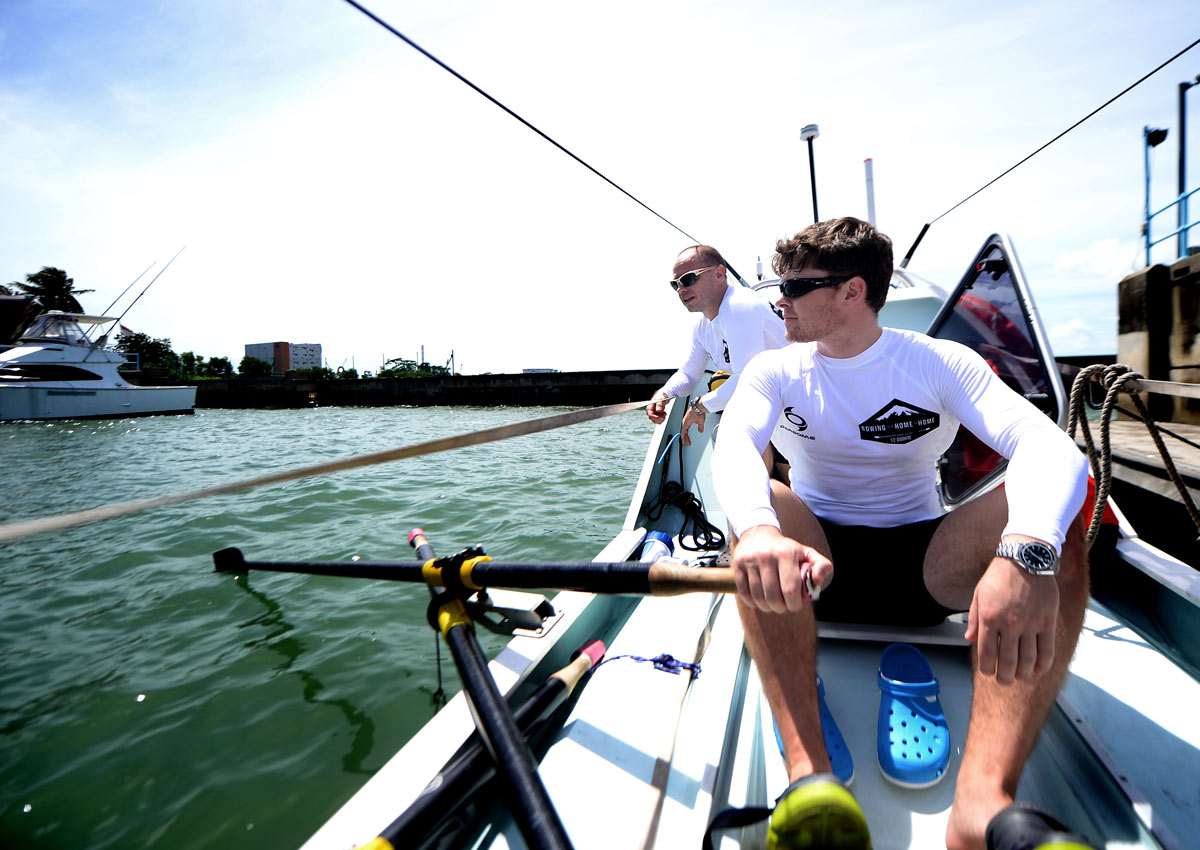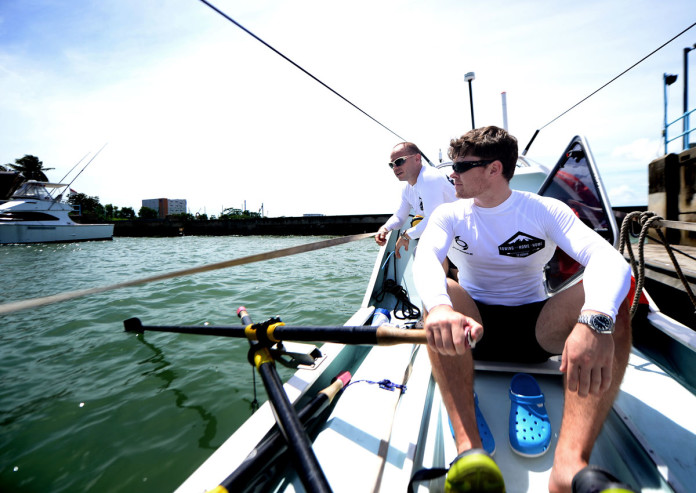In the flight from New Zealand to Singapore, flying thousands of meters of air, Mr. Grant Rollinson is mainly in his body.
He completed an expedition in 2013, climbed to the north and south of the island’s highest peak, but his adventurous soul again uneasy.
He was not an airplane, he thought, why not try the journey through land and sea?
After two years of planning, the big task will become a reality.
On Jan. 3, Singapore’s permanent residents will begin a 12,000-kilometer journey, which is almost a year-long “boating from home”.
Mr. Rollinsen will try to reach Darwin, Australia’s Northern Territory, from Singapore, through the Indonesian archipelago, and ship his $ 120,000 rowboat.
Kiwi will then cycle 4500 km south-east to Coffs Harbor, New South Wales, and the ship will be delivered to the end of the cyclical phase.
He would then travel through the Tasman Sea for another 3,000 kilometers to New Plymouth in Taranaki.
“From there, it only had a 40-kilometer cycle back to my parents’ house in Stratford,” said Mr. Rawlinson at Lafr dock last week.
“I hope I can get home at Christmas.
“The Sunday Times:” As far as I know, no one has tried this route, so there are many unknowns, no logs for reference, and years of research to plan the trip. ”
His goal may not be possible, 42-year-old, who resigned his job as a regional sales manager focused on the trip, not enough to doubt.
After all, climbing over the world for more than a decade – he adjusted the Mount Everest in 2012 – taught him that he did not reach the peak.
The expedition budget was US $ 250,000, with a number of sponsors.
At the end of this personal commitment, there is neither silverware nor fame, only the quiet satisfaction that the explorers like Mr. Rawlingson seek.
“This is really about the journey, not the destination, and I believe that if we are willing to push our limits, we have great things,” said former NFL 7-Player.
The physical cost will be enormous. In the first stop from Singapore to Australia, Mr. Rawlinson and teammate Charlie Smith will alternate one to two hour shifts and keep rowing for weeks.
One will stay in a narrow cabin while the other drives 750kg (including supplies) of fiberglass boats forward.
They estimate that they will need a month to reach Bali, where they will rest for about a week.
Mr Rawlinson’s wife Stephanie and one-year-old twin Rachel and Kate will meet there.
Mr. Smith, a 26-year-old British who works as a project manager in Singapore, said: “We want to travel at a speed of about 4-5 kilometers. In good conditions, we can see that we are up to 100 kilometers per day .
He will only participate in the first rowing leg. Last year, he was introduced to Mr. Rawlinson by a familiar person and jumped into the “once in a lifetime” adventure.
In the last year’s intensive training program, Mr Smith added 11 kilograms to his previous 84 kg frame, and the power will come in handy for the difficult work ahead.
They will carry two sets of clothes and about 150 kilograms of food – mainly freeze-dried food, from curry to roast lamb and pasta, can last about 40 days, daily consumption of about 6000 calories.
Both expect to consume a similar amount of calories per day through rowing.
Mr Smith, a fanatical climber in England, added: “It will be the most physical thing I have ever done.
Both were trained for more than 300 hours.
They spent two weeks in Singapore, Bintan and Batam, spent a week together at sea.
However, there is no amount of practice to prepare a man in a 6.8m craft boat by the sea crossing with the rearview mirror fixed to the stern; they retreated after all.
“There are so many dangers,” Mr. Rawlinson said.
“We can be hit by a ship, hit by a storm, break our equipment, get sick or get stuck in a pirate, and you really do not know what to do.
At least the ship is equipped with the latest technology to give them every chance of success.
The solar panels at both ends of the process generate electricity for a large number of electrical devices, including pumps that convert seawater into potable water, a GPS-positioned satellite communications terminal every 15 minutes, and a weather-updated satellite communications terminal every day.
It can get very lonely surrounded by so great, though Mr. Rawlinson seems to prefer long introspection.
This will be life stripped down to its barest form, he said.
“You eat, sleep and row.”
The reason was simple.
As French Nobel Prize-winning author Andre Gide once wrote: “One does not discover new lands without first consenting to lose sight of the shore.”
jonwong@sph.com.sg

This article was first published on December 25, 2016.
Get a copy of The Straits Times or go to straitstimes.com for more stories.







